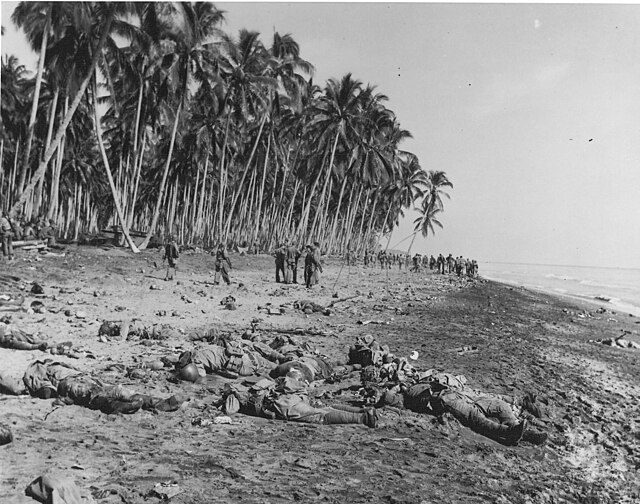Banzai charge or Banzai attack is the term that was used by the Allied forces of World War II to refer to Japanese human wave attacks and swarming staged by infantry units. This term came from the Japanese battle cry tennōheika banzai , and was shortened to banzai, specifically referring to the tactic used by the Imperial Japanese Army during the Pacific War. This tactic was used when the Japanese commanders of infantry battalions foresaw that a battle was about to be lost, as a last ditch effort in thwarting Allied forces.
Japanese woodcut print depicting an infantry charge in the Russo-Japanese War
The charge of Saigō Takamori inspired the government that the charge was their final, honorable action.
Japanese soldiers honor the Emperor with the shout "Banzai" during the Second Sino-Japanese War (1938).
Dead Imperial Japanese Army soldiers on the sandbar of Alligator Creek on Guadalcanal after being killed by U.S. Marines during the Battle of the Tenaru, August 21, 1942.
A human wave attack, also known as a human sea attack, is an offensive infantry tactic in which an attacker conducts an unprotected frontal assault with densely concentrated infantry formations against the enemy line, intended to overrun and overwhelm the defenders by engaging in melee combat. The name refers to the concept of a coordinated mass of soldiers falling upon an enemy force and sweeping them away with sheer weight and momentum, like an ocean wave breaking on a beach.
Japanese woodcut print depicting an infantry charge in the Russo-Japanese War




